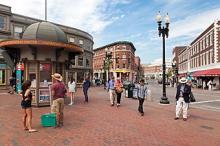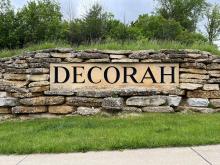
We have covered on numerous occasions the fiber-to-the-home boom underway in the rural hill towns of western Massachusetts. Now we are seeing a number of communities around the Boston metro area in the eastern part of the Commonwealth, as well as in other of the more populous towns and cities across Massachusetts, exploring the possibility of building their own community broadband networks.
In the rural environs of the Berkshires the demand for municipal fiber networks was primarily driven by a need for high-speed Internet connectivity in small towns with only outdated DSL or satellite-based Internet service as options. In the larger cities and towns in other parts of the state, by contrast, the driving force for better broadband has been a desire to introduce competition into a market dominated by the regional monopoly providers (Comcast, Verizon and Charter-Spectrum) that have left many communities starving for a cheaper, faster, and more reliable option.
The towns are at different stages. Some are moving through the study and design phase. Some are stalled. Some have decided to work with third-party providers. And one is on the cusp of building a fiber network, beginning with a pilot project. Here is snapshot of nine different communities and where they stand. (It is not an exahustive list of towns in Massachusetts contemplating municipal networks).
Agawam
Just three miles south of Springfield is Agawam, a town of approximately 28,000, home to the only Six Flags Amusement Park in New England. What Agawam residents do not find amusing, however, was when Comcast announced plans to introduce monthly data caps and associated fees for customers who exceeded those caps. It was enough to convince town officials they should explore building their own municipal broadband network.
The town formed the Agawam Municipal Fiber Task Force and charged the task force with reviewing “the feasibility of the Town constructing and operating its own fiber network, partnering with another municipal fiber network, and/or the potential of a private company developing a fiber network to increase competition among Internet providers.”
In April, Agawam Mayor William Sapelli said in a press statement that the task force found it would be “cost prohibitive” for the town to build its own fiber network, which was estimated to cost between $10 and $15 million. Instead, the city would work with “a third party carrier,” OTELCO, a private telecommunications company based in Alabama, to build a fiber network to “offer residents another alternative for Internet services.”
Besides balking at the cost of building their own municipal network, the task force also concluded that the process the town would need to go through to get state approval to establish a municipal network and then be in a position to move forward would take three or more years. Furthermore, according to the Mayor’s press release, OTELCO already had a presence in the region and “their plan is privately financed at no cost to the taxpayer in town and will provide competition in the market faster than any other proposal.”
Cambridge
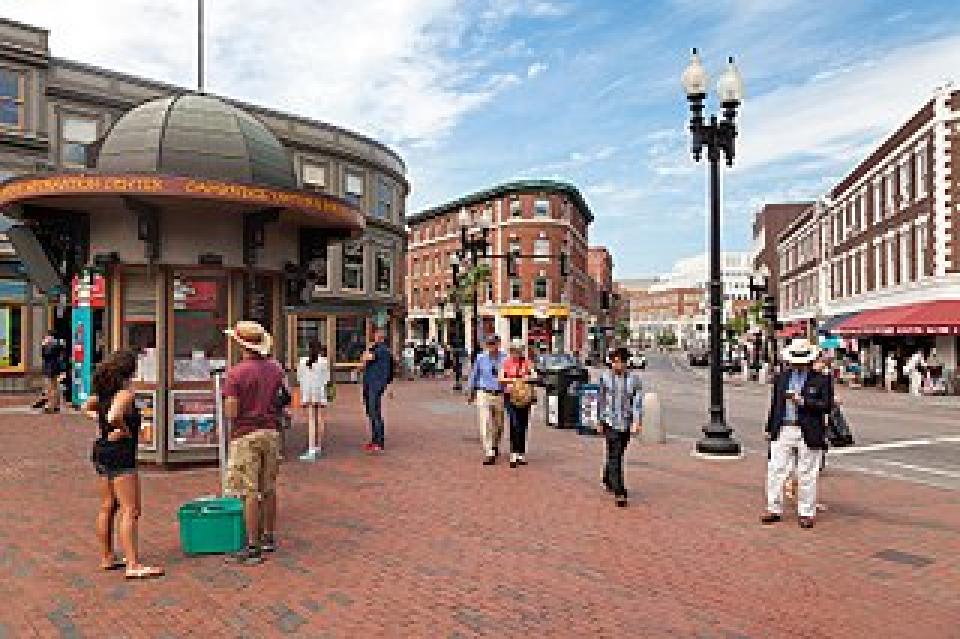
Just outside of Boston in Cambridge, home of Harvard University and MIT, the beef over broadband has been anything but collegial. As the Harvard Crimson reported in May, “municipal broadband has been a long-simmering issue in Cambridge, with the original ‘Broadband Task Force’ appointed by the previous city manager, Richard C. Rossi, in 2014. Recently, city councilors have threatened to vote down the city’s budget over repeated delays on a municipal broadband study.”
The Cambridge Day, which has covered the conflict closely, reported a year ago that city council requests for the current city manager, Louis DePasquale, to oversee and publish a feasibility study had been delayed for years because of a “never-explained refusal” by DePasquale.
DePasquale relented and the city recently issued a request for proposals “to analyze options and implement solutions to provide broadband.”
Falmouth
Things are much brighter in Falmouth on Cape Cod, where an all-volunteer citizen-led organization is spearheading the charge to bring town-wide fiber connectivity to Falmouth’s approximately 31,000 year-round residents. (The population swells to 105,000 in the summer). The Falmouth EDIC has already funded a detailed feasibility study at the urging of an ad hoc town citizen committee.
Since then, FalmouthNet has been incorporated as a non-profit organization and raised $50,000, including a stock donation from one of the fathers of the Internet, Vint Cerf, who is currently Chief Internet Evangelist at Google and a supporter of FalmouthNet’s fiber-to-the-home project in a town noted as an international hub of marine science.
When Cerf made the donation he said he supported the effort because “Internet access has become a necessity” and he was “glad to see community initiatives like FalmouthNet proceed because they serve as proof of concept for others.”
Over the past several months, FalmouthNet has been holding public education meetings with community groups and homeowner associations, looking to build popular support for the project, which is estimated to cost $55 million to construct the network.
FalmouthNet is also investigating the possibility of asking the town to form a Falmouth Municipal Light Plant (MLP), which enables several advantages for a locally based network such as the ability to form alliances and more easily contract for services.
In order for a town to form an MLP, however, state law requires 2/3 majority voter approval at two separate Town Meetings within 13 months. See a short video from the FalmouthNet advocacy group below.
FalmouthNet.mp4 from UnderCurrent Productions on Vimeo.
Milton
The MLP route is the path forward in Milton, an upscale town of about 28,000 just 10 miles south of Boston. Voters there recently approved the formation of a Milton MLP with Town Meeting voters approving the measure 187 to 20.
The town had already created a Municipal Broadband Committee back in October 2017 when the town’s aging iNet, which is owned and operated by Comcast, began to degrade, Municipal Broadband Committee Chair Joe Chamberlain told us in a recent interview.
Chamberlain said when the town was negotiating the renewal of Comcast’s franchise agreement in 2018 they were informed that Comcast raised the spectre of no longer supporting the town’s iNet, the telecommunications infrastructure for the town’s schools, police and fire departments.
A 2019 cost-and-design study that looked at the possibility of the town building its own fiber iNet indicated it would cost about $1 million to deploy an 11-mile loop which could also serve as the backbone for a potential fiber-to-the-home network should the town decide to pursue that.
Chamberlain, who has created a website to inform the community of the town’s efforts and advocate for a community-owned network, says the pandemic “exposed and exacerbated the significance of connectivity for everybody” and lit a fire under town officials to move forward.
At Milton’s annual Town Meeting in May, voters approved an article to form a Municipal Light Plant, which Milton Selectmen Michael Zullas said was a step toward the town eventually providing municipal broadband service that would bring “better, faster, cheaper Internet service,” as The Patriot-Ledger reported.
However, the town has yet to commission a feasibility study to determine how much it would cost to build the network. In the meantime, Chamberlain says the Municipal Broadband Committee is working on a business plan and also recently selected a vendor to conduct a market survey to get a better sense of how much demand there is among town residents and businesses for municipal fiber service.
Northampton
In the western part of the state, nestled in Pioneer Valley 19 miles north of Springfield, is the city of Northampton (pop. 28,000). Home to Smith College, the city is known for its bohemian college vibe, art galleries, restaurants, eccentric stores, and coffee shops.
What’s not so hip in Northampton is the Internet service. And when the town conducted a recent survey of residents, asking whether the town should consider providing broadband service, the response was favorable. According to the Daily Hampshire Gazette, about 25 percent of city residents completed the survey with an eye-popping 98 percent of respondents saying yes to municipal broadband.
In May, the Northampton City Council voted to form a Municipal Light Plant (MLP). The second vote necessary to establish the MLP will likely come in November when voters head to the polls for municipal elections.
Buoyed by the favorable response to the town’s broadband survey, Northampton Mayor David Narkewicz told the Daily Hampshire Gazette: “We’ve heard a pretty clear message that we need to continue working on pursuing a municipal broadband option. We will continue to do that.”
The next step is for the city to complete a feasibility study, which will give city officials and residents a clear picture on how much it will cost to build a city-wide network.
West Springfield
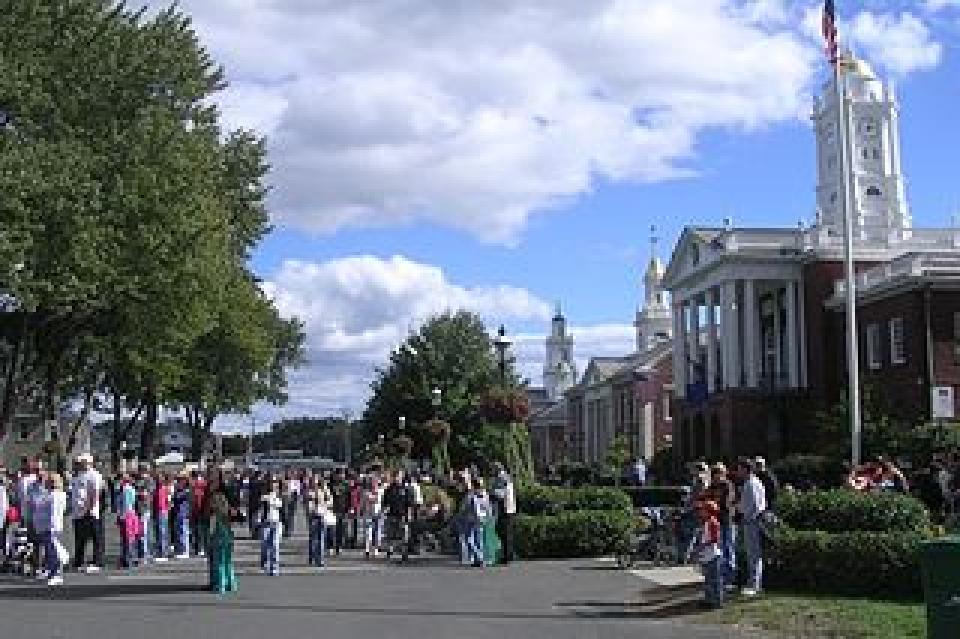
Situated on the “west side” of the Connecticut River across from the city of Springfield, West Springfield is a town of approximately 28,000 residents. Considered part of the Springfield-Hartford Knowledge Corridor, this former railroad hub is closer to Hartford, Connecticut than Boston. These days, West Springfield is chugging down a telecommunication track with the last stop being the creation of the municipal broadband network.
Last month, the West Springfield Town Council voted unanimously to approve an intergovernmental agreement with Westfield Gas and Electric (WG&E) who for the past several years has been working with towns in and around the Berkshires to build fiber-to-the-home networks.
In addition to the agreement to work with Westfield Gas and Electric, the town council also unanimously approved the establishment of a municipal broadband enterprise fund as well as a vote in favor of forming a Municipal Light Plant (MLP).
West Springfield Mayor William Reichelt explained to WWLP 22 News the impetus for a municipal network in a town that has long been served by Comcast.
“We have been researching different options to provide West Springfield residents with a high quality, reliable Internet service. With the shift to remote learning and remote work over the past fifteen months, we have experienced the limitations of and frustrations with the Internet options currently available in our area. With Comcast’s data cap implementation on the horizon, we knew that it was an ideal time for us to move forward with this significant investment in town-owned infrastructure to ensure our residents have quality services available to them,” Reichelt said.
City Councilor George Kelly was even more strident at a council meeting last month about why the town felt it was necessary to build an alternative to the incumbent monopoly provider.
“This has been a long time coming,” said Councilor George Kelly. “Comcast tried to increase the price of Zoom meetings for our kids who were out for the pandemic. I think this is long overdue. I think it’s a great thing for the town of West Springfield.”
As town officials move toward establishing a West Springfield MLP, Westfield Gas and Electric is building a pilot fiber network in four neighborhoods along Route 20 near Mittineague Park. The estimated cost to build the pilot network is $1.8 million and will serve approximately 1,000 homes, according to MassLive.com.
That work is slated to begin in the spring of 2022 with the first subscribers expected to get service in early summer 2022. If the pilot project is successful, the town will then look to build-out the network town-wide at an estimated cost ranging between $15 and $20 million.
A Second Wave on Horizon
In several other Massachusetts cities and towns, municipal broadband is a hot topic. In the Boston suburb of Quincy, a city of approximately 100,000, city officials are looking to Ammon, Idaho as a model, as city officials are now weighing network design and construction proposals from five organizations with an aim of building an open access fiber network.
Quincy Mayor Thomas Koch is a leading proponent of moving forward to foster competition in a city where many residents are not satisfied with the service offered by Comcast Xfinity.
“Usually we can develop a project and take care of an issue, whether it’s a water line or a sewer line, potholes … when it comes to fiber and cable, it’s a different ballgame, so we’ve always felt a little handcuffed that folks call us and ask about what options they have in the city, and basically there’s one option,” Walker told GovTech.com. “We prefer to own the issue … we want to be able to go out and fix it.”
It’s a similar story in nearby Weymouth, home to about 55,000 residents, where Mayor Robert Hedlund announced the town would develop a broadband master plan.
“For years we have heard complaints from residents about the lack of competition for Internet service providers in Town and are frequently asked why this is,” Mayor Hedlund said in a press release announcing the initiative. “This project would specifically look into the feasibility of the Town operating its own broadband network, as a public utility, that could attract new and varied internet service providers to hopefully increase service and reduce prices while also ensuring our interoperable communications are not susceptible to issues that could arise with a privately-operated network.”
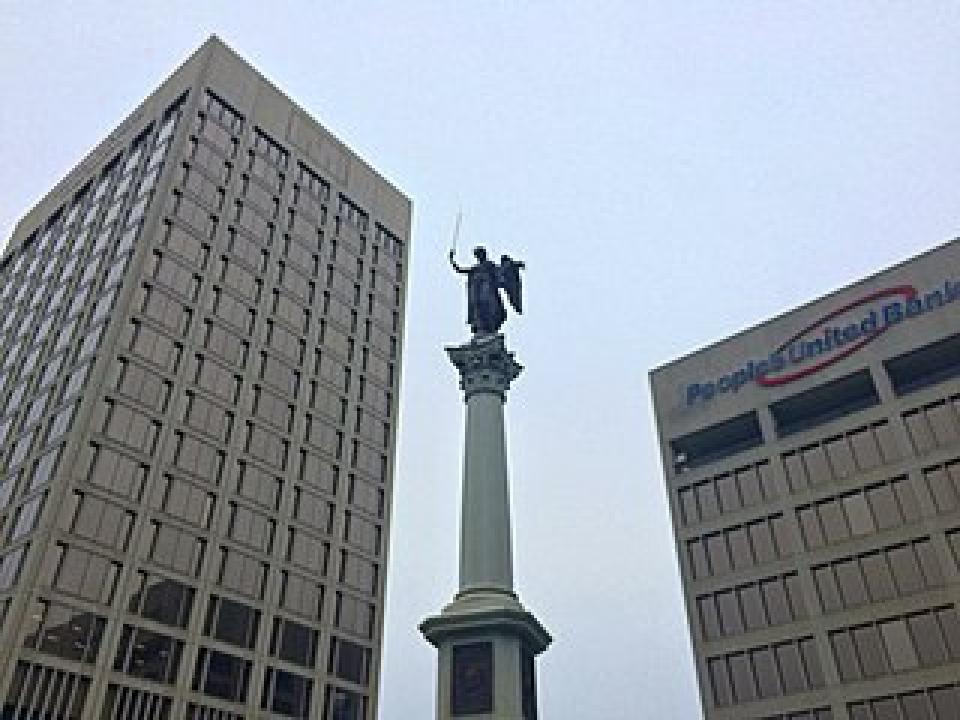
And in the central Massachusetts City of Worcester, the largest city in the Commonwealth outside of Boston with a population of approximately 182,000 residents, city officials there are weighing options on how to improve Internet access. In that city, it’s dissatisfaction with the incumbent provider, Charter Spectrum, and a recent outage that revived talk about building a municipal network.
At the time of the outage, City Councilor Matt Wally, chair of the city’s Urban Technologies, Innovation & Environment Committee, told the Worcester Telegram & Gazette that “residents don’t have a choice, they’re stuck with Spectrum. But, we’ve got to make sure that everyone has access to fast, reliable internet access.”
In a report published in July 2020 by the Worcester Regional Research Bureau [pdf], “monopolization” was identified as a central problem for Internet subscribers in the city. The study concluded by noting that “the benefits of municipal broadband are undeniable—local control over an increasingly essential service, broader reach resulting in more equity in terms of which city residents deserve to have an internet connection and a commitment to speed and service that is not guaranteed from a for-profit entity.”
After U.S. Senator Ed Markey recently encouraged city officials to build a municipal broadband network, Eric Batista, the director of the city's office of technology and innovation, told the Worcester Telegram & Gazette the next step, should the city manager opt to pursue it, would be to hire a consultant to conduct a feasibility study.
We will continue to follow and report on the developments in each of these cities and towns as it appears Massachusetts may be approaching a watershed moment with a municipal broadband wave stretching from one end of the state to the other.
(Disclaimer: Chris Mitchell and Sean Gonsalves serve on the advisory board of FalmouthNet)
Header Image: Attribution-ShareAlike 3.0 Unported (CC BY-SA 3.0)
Inline image of Harvard Square from Wikimedia user Caroline Culler
Inline image of West Springfield from Wikimedia userJohn Phelan
Inline image of Wocester from Wikimedia user Andre Carrotflower
